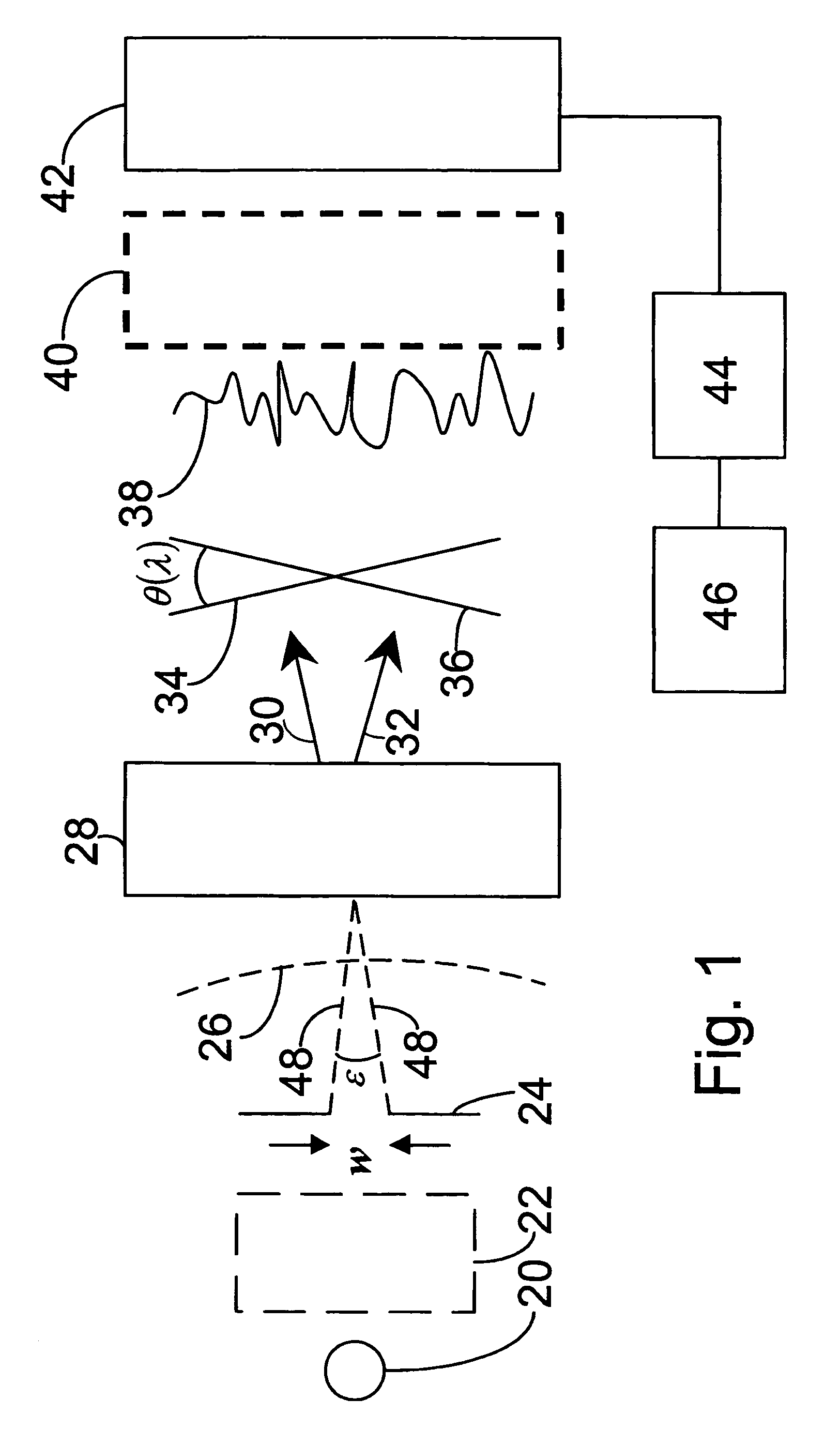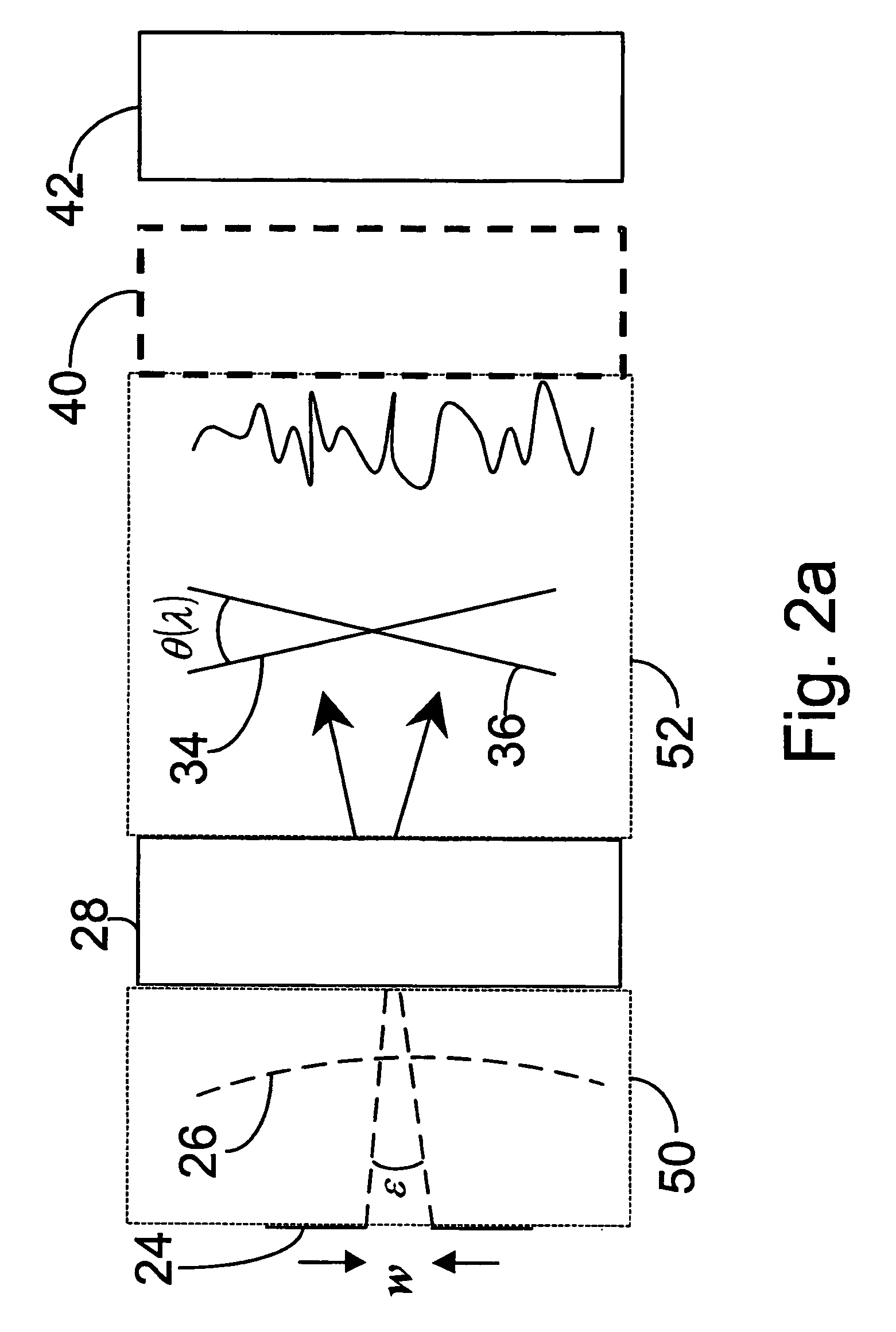Wavelength dispersive fourier transform spectrometer
a fourier transform and wavelength technology, applied in the field of spectrometers, can solve the problems of reducing light gathering efficiency, high acquisition time and/or spectra with a relatively low signal to noise ratio, and the cost of having one or more scanning elements
- Summary
- Abstract
- Description
- Claims
- Application Information
AI Technical Summary
Benefits of technology
Problems solved by technology
Method used
Image
Examples
Embodiment Construction
[0032]Generally, the present invention provides a method and a spectrometer for the spectral analysis of an optical signal directed to a twofold wavelength dispersive device. For a single wavelength, the optical signal exiting the twofold dispersive device includes two wavefronts generally at an angle to one another to produce an interference pattern. The interference pattern is detected and subsequently analyzed via a Fourier transform to produce the optical spectrum of the input beam.
[0033]Most of the disclosed embodiments of the present invention will be illustrated as being based on optical phased arrays or arrayed waveguide technology, the basic principles of which are presented by M. K. Smit in IEEE Journal of Selected Topics in Quantum Electronics, Vol. 2, No. 2, Pp. 236-250, June 1996. Furthermore, embodiments of the present invention will be illustrated in terms of arrayed waveguide spectrometers preferably formed by a silicon on insulator (SOI) process, as is known in the ...
PUM
 Login to View More
Login to View More Abstract
Description
Claims
Application Information
 Login to View More
Login to View More - R&D
- Intellectual Property
- Life Sciences
- Materials
- Tech Scout
- Unparalleled Data Quality
- Higher Quality Content
- 60% Fewer Hallucinations
Browse by: Latest US Patents, China's latest patents, Technical Efficacy Thesaurus, Application Domain, Technology Topic, Popular Technical Reports.
© 2025 PatSnap. All rights reserved.Legal|Privacy policy|Modern Slavery Act Transparency Statement|Sitemap|About US| Contact US: help@patsnap.com



